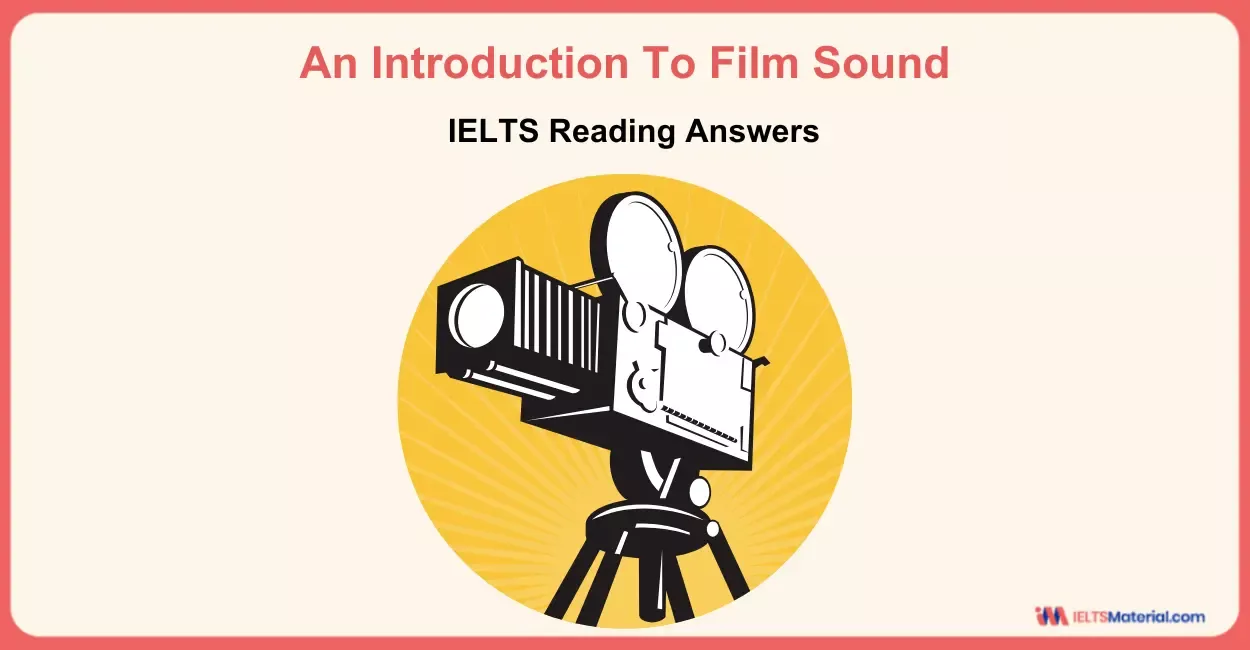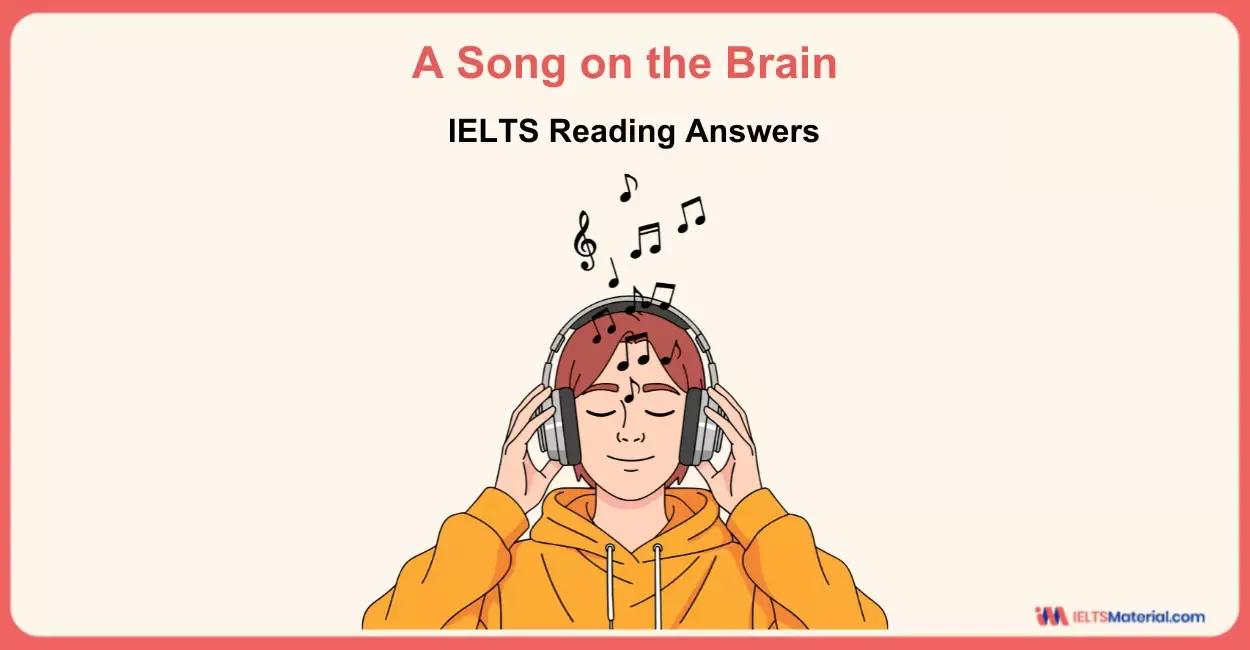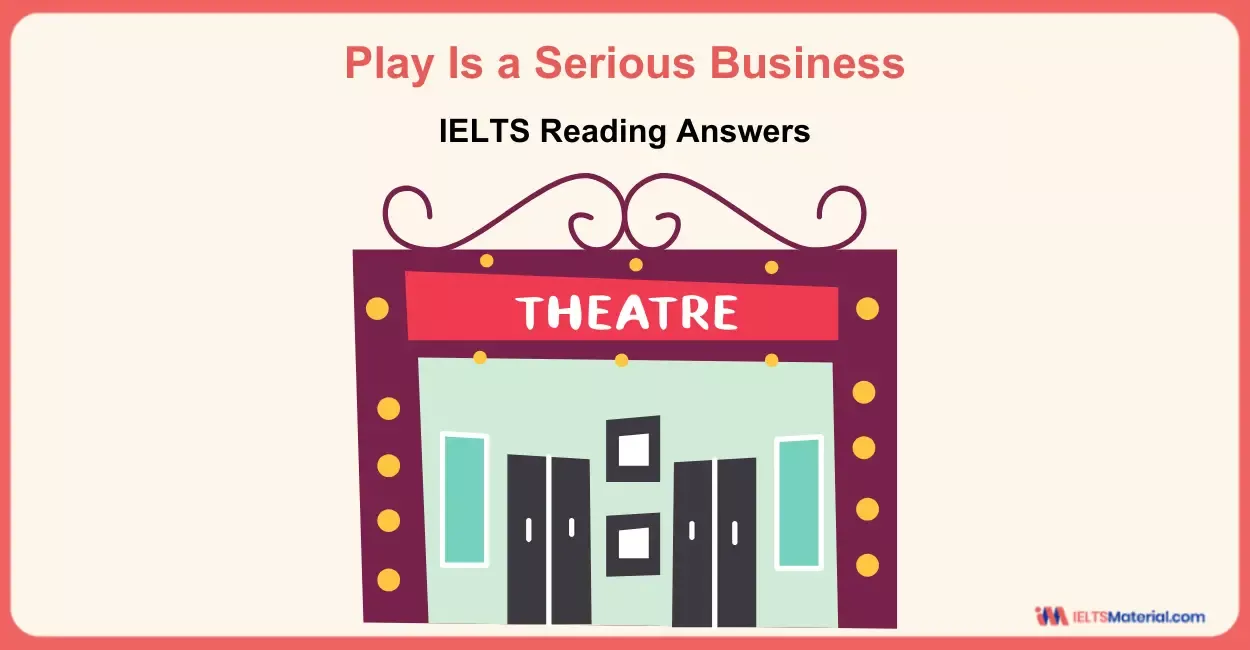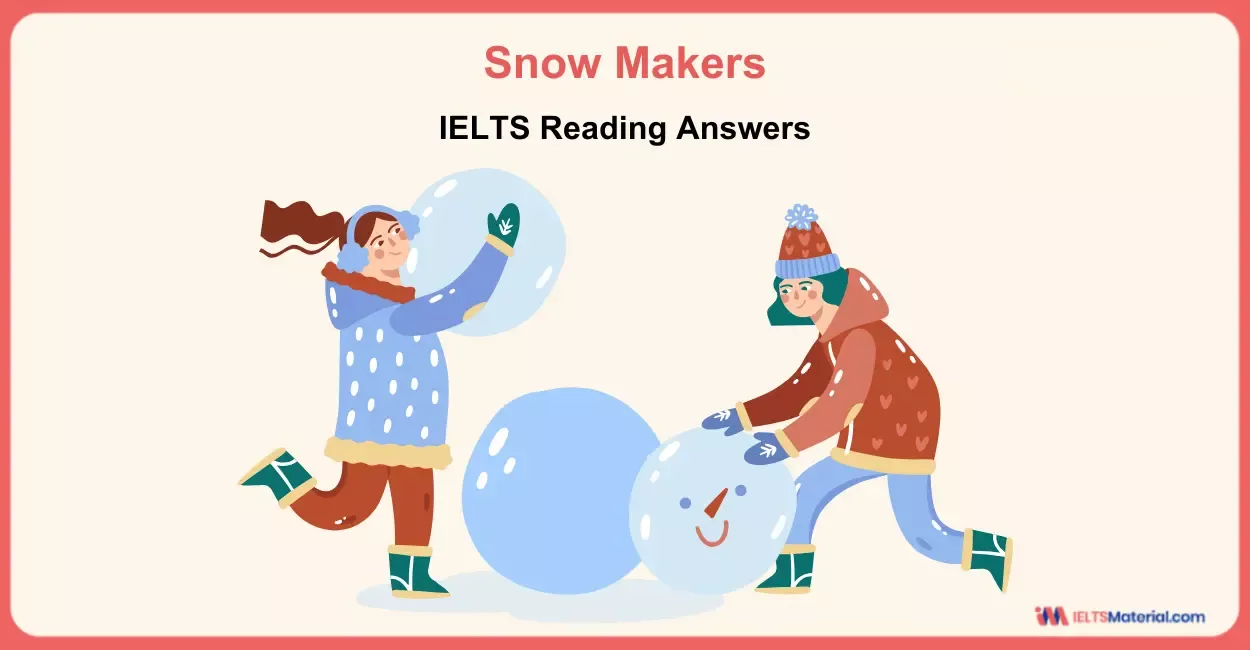Theory or Practice – IELTS Reading Answers
16 min read
Updated On
-
Copy link
Practice the Theory or Practice Reading Answers with location to test your reading skills for a band 9. Learn how to approach various IELTS reading questions and improve your reading strategy by examining the answer explanations & tips provided here.
Table of Contents

Limited-Time Offer : Access a FREE 10-Day IELTS Study Plan!
One of the biggest hurdles in the IELTS Reading test is dealing with the wide variety of question types, and each one tests a different reading skill. From True/False/Not Given questions that test your ability to recognize factual accuracy, to Matching Sentence Endings that assess your understanding of sentence structure and information, every format demands a different strategy. Misunderstanding even one type can lead to costly mistakes and lower scores. But acquainting oneself with them through the practice of passages, like Theory or Practice IELTS Reading Answers, can be helpful.
So, in this blog, we will solve Theory or Practice IELTS Reading Answers, provide explanations, locations for the answers, and IELTS Reading tips and techniques to increase your reading speed to help you handle the two different types of reading question types given with this passage.
Passage for Theory or Practice IELTS Reading Answers
Answering the questions from this passage requires you to read the Theory or Practice passage below. This will enhance your focus, accuracy, and comprehension skills, all of which are vital for achieving a high IELTS band score in the reading module.
Theory or Practice: What is the point of research carried out by biz schools?
A Students go to universities and other academic institutions to prepare for their future. We pay tuition and struggle through classes in the hopes that we can find a fulfilling and exciting career. But the choice of your university has a large influence on your future. How can you know which university will prepare you the best for your future? Like other academic institutions, business schools are judged by the quality of the research carried out by their faculties. Professors must both teach students and also produce original research in their own field. The quality of this research is assessed by academic publications. At the same time, universities have another responsibility to equip their students for the real world, however that is defined. Most students learning from professors will not go into academics themselves — so how do academics best prepare them for their future careers, whatever that may be? Whether academic research actually produces anything that is useful to the practice of business, or even whether it is its job to do so, are questions that can provoke vigorous arguments on campus.
B The debate, which first flared during the 1950s, was reignited in August, when AACSB International, the most widely recognised global accrediting agency for business schools, announced it would consider changing the way it evaluates research. The news followed rather damning criticism in 2002 from Jeffrey Pfeffer, a Stanford professor, and Christina Fong of Washington University, which questioned whether business education in its current guise was sustainable. The study found that traditional modes of academia were not adequately preparing students for the kind of careers they faced in current times. The most controversial recommendation in AACSB’s draft report (which was sent round to administrators for their comment) is that the schools should be required to demonstrate the value of their faculties’ research not simply by listing its citations in journals, but by demonstrating the impact it has in the professional world. New qualifiers, such as average incomes, student placement in top firms and business collaborations, would now be considered just as important as academic publications.
C AACSB justifies its stance by saying that it wants schools and faculty to play to their strengths, whether they be in pedagogy, in the research of practical applications, or in scholarly endeavor. Traditionally, universities operate in a pyramid structure. Everyone enters and stays in an attempt to be successful in their academic field. A psychology professor must publish competitive research in the top neuroscience journals. A Cultural Studies professor must send graduate students on new field research expeditions to be taken seriously. This research is the core of a university’s output. And research of any kind is expensive—AACSB points out that business schools in America alone spend more than $320m a year on it. So it seems legitimate to ask for, what purpose it is undertaken?
D If a school chose to specialise in professional outputs rather than academic outputs, it could use such a large sum of money and redirect it into more fruitful programs. For example, if a business school wanted a larger presence of employees at top financial firms, this money may be better spent on a career center which focuses on building the skills of students, rather than paying for more high-level research to be done through the effort of faculty. A change in evaluation could also open the door to inviting more professionals from different fields to teach as adjuncts. Students could take accredited courses from people who are currently working in their dream field. The AACSB insists that universities answer the question as to why research is the most critical component of traditional education.
E On one level, the question is simple to answer. Research in business schools, as anywhere else, is about expanding the boundaries of knowledge; it thrives on answering unasked questions. Surely this pursuit of knowledge is still important to the university system. Our society progresses because we learn how to do things in new ways, a process which depends heavily on research and academics. But one cannot ignore the other obvious practical uses of research publications. Research is also about cementing schools’ and professors’ reputations. Schools gain kudos from their faculties’ record of publication: which journals publish them, and how often. In some cases, such as with government-funded schools in Britain, it can affect how much money they receive. For professors, the mantra is often “publish or perish”. Their careers depend on being seen in the right journals.
F But at a certain point, one has to wonder whether this research is being done for the benefit of the university or for the students the university aims to teach. Greater publications will attract greater funding, which will in turn be spent on better publications. Students seeking to enter professions out of academia find this cycle frustrating, and often see their professors as being part of the “Ivory Tower” of academia, operating in a self-contained community that has little influence on the outside world.
G The research is almost universally unread by real-world managers. Part of the trouble is that the journals labour under a similar ethos. They publish more than 20,000 articles each year. Most of the research is highly quantitative, hypothesis-driven and esoteric. As a result, it is almost universally unread by real-world managers. Much of the research criticises other published research. A paper in a 2006 issue of Strategy & Leadership commented that “research is not designed with managers’ needs in mind, nor is it communicated in the journals they read. For the most part, it has become a self-referential, closed system irrelevant to corporate performance.” The AACSB demands that this segregation must change for the future of higher education. If students must invest thousands of dollars for an education as part of their career path, the academics which serve the students should be more fully incorporated into the professional world. This means that universities must focus on other strengths outside of research, such as professional networks, technology skills, and connections with top business firms around the world. Though many universities resisted the report, today’s world continues to change. The universities which prepare students for our changing future have little choice but to change with new trends and new standards.
Question Types for Theory or Practice IELTS Reading Answers
The passage, Theory or Practice Reading Answers, is an IELTS Academic reading passage that consists of 14 questions. So, solving this passage will help you get acquainted with different IELTS Reading question types with examples. The question types found in it are:
- IELTS Reading Multiple-Choice Question (Q. 27-31)
- IELTS Reading True/False/Not Given (Q. 32-36)
- IELTS Reading Matching Endings (Q. 37-40)
Questions 27 – 29
Choose the correct letter A, B, C or D.
Write the correct letter in boxes 27-29 on your answer sheet.
27 In the second paragraph, the recommendation given by AACSB is
A to focus on listing research paper’s citation only.
B to consider the quantity of academic publications.
C to evaluate how the paper influences the field.
D to maintain the traditional modes of academia.
28 Why does AACSB put forward the recommendation?
A to give full play to the faculties’ advantage.
B to reinforce the play to the pyramid structure of universities.
C to push professors to publish competitive papers.
D to reduce costs of research in universities.
29 Why does the author mention the Journal Strategy & Leadership?
A to characterize research as irrelevant to company performance
B to suggest that managers don’t read research papers.
C to describe students’ expectation for universities.
D to exemplify high-quality research papers.
Questions 30-31
Choose TWO letters, A-E.
Write the correct letters in boxes 30-31 on your answer sheet.
Which TWO choices are in line with Jeffrey Pfeffer and Christina Fong’s idea?
A Students should pay less to attend universities.
B Business education is not doing their job well.
C Professors should not focus on writing papers.
D Students are ill-prepared for their career from universities.
E Recognized accrediting agency can evaluate research well.
Questions 32-36
Do the following statements agree with the information given in the Reading Passage?
In boxes 32-36 on your answer sheet, write
TRUE if the statement is true
FALSE if the statement is false
NOT GIVEN if the information is not given in the passage
32 The debate about the usefulness of academic research for business practices is a recent one.
33 AACSB’s draft report was not reviewed externally.
34 Business schools in the US spend more than 320 million dollars yearly on research.
35 Many universities pursue professional output.
36 Greater publications benefit professors and students as well.
Questions 37-40
Complete each sentence with the correct ending, A-E, below.
Write the correct letter, A-E, in boxes 37-40 on your answer sheet.
A it progresses as we learn innovative ways of doing things.
B the trends and standards are changing.
C their jobs depend on it.
D they care about their school rankings and government funds.
E it helps students to go into top business firms.
37 Most professors support academic research because
38 Schools support academic research because
39 Our society needs academic research because
40 Universities resisting the AACSB should change because
Learn quick solving tips and reading techniques from experts!
Connect with us through our FREE IELTS online classes!
Theory or Practice Reading Answers With Location and Explanations
Study the answers and detailed explanations of each question in the Theory or Practice passage from IELTS recent actual tests to improve your chances of getting a high IELTS band.
27 Answer: C
Question type: Multiple Choice Question
Answer location: Paragraph B, line 8 – line 11
Answer explanation: The given lines of Paragraph B say that “The most controversial recommendation in AACSB’s draft report (which was sent round to administrators for their comment) is that the schools should be required to demonstrate the value of their faculties’ research…but by demonstrating the impact it has in the professional world.” From the lines, it is clear that the recommendation AACSB gave was to evaluate and demonstrate how the paper influences the professional field. Hence, the answer is C.
28 Answer: A
Question type: Multiple Choice Question
Answer location: Paragraph C, line 1 – line 3
Answer explanation: In the mentioned lines of Paragraph C, it is stated that “AACSB justifies its stance by saying that it wants schools and faculty to play to their strengths, whether they be in pedagogy, in the research of practical applications, or in scholarly endeavor.”. This points to the fact that the recommendation was made to give full play to the schools and faculties’ advantage in different areas. Hence, the answer is A.
29 Answer: A
Question type: Multiple Choice Question
Answer location: Paragraph G, line 5- line 8
Answer explanation: In the lines of Paragraph G, it is mentioned “A paper in a 2006 issue of Strategy & Leadership commented that “research is not designed with managers’ needs in mind, nor is it communicated in the journals they read. For the most part, it has become a self-referential, closed system irrelevant to corporate performance.”” The lines tell that by mentioning Journal Strategy & Leadership, the writer wants to characterize research as a self-referential system which is irrelevant to company (corporate) performance. Hence, the answer is A.
30 Answer: B
Question type: Multiple Choice Question
Answer location: Paragraph B, line 4 – line 6
Answer explanation: The quoted lines of Paragraph B claims that “The news followed rather damning criticism in 2002 from Jeffrey Pfeffer, a Stanford professor, and Christina Fong of Washington University, which questioned whether business education in its current guise was sustainable.”. It is clear that Jeffrey Pfeffer and Christina Fong view that business education is not doing their job well (whether business education in its current guise was sustainable). Hence, the answer is B.
31 Answer: D
Question type: Multiple Choice Question
Answer location: Paragraph B, line 6 – line 7
Answer explanation: The mentioned line of Paragraph B says that “The study found that traditional modes of academia were not adequately preparing students for the kind of careers they faced in current times.”. As it is clear that the study found that due to the traditional ways of academic study, students are ill-prepared (were not adequately preparing) for their career from universities, the answer is D.
32 Answer: False
Question type: True/False/Not Given
Answer location: Paragraph B, line 1 – line 3
Answer explanation: The quoted line in Paragraph B says that “The debate, which first flared during the 1950s, was reignited in August, when AACSB International, the most widely recognised global accrediting agency for business schools, announced it would consider changing the way it evaluates research.” At the end of the previous paragraph the writer expresses an opinion – Whether academic research actually produces anything that is useful to the practice of business, or even whether it is its job to do so, are questions that can provoke vigorous arguments on campus. Finally, the beginning of this paragraph makes it clear that this debate dates back in the 1950s and is not a recent one. Hence, the answer is False.
Unlock Explanations
33 Answer: False
Question type: True/False/Not Given
Answer location: Paragraph B, line 8 – line 9
Answer explanation: The lines of Paragraph B say that “The most controversial recommendation in AACSB’s draft report (which was sent round to administrators for their comment)…”. This points out that AACSB’s draft report was reviewed externally by administrators. Hence, the answer is False.
34 Answer: True
Question type: True/False/Not Given
Answer location: Paragraph C, line 7 – line 9
Answer explanation: The specified lines say that “This research is the core of a university’s output. And research of any kind is expensive—AACSB points out that business schools in America alone spend more than $320m a year on it.” This points out that business schools in the US spend more than 320 million dollars yearly on research. Hence, the answer is True.
35 Answer: Not Given
Question type: True/False/Not Given
Answer location: N.A.
Answer explanation: Since there is no information on whether many universities pursue professional output or not, the answer is Not Given.
36 Answer: False
Question type: True/False/Not Given
Answer location: Paragraph F
Answer explanation: The provided lines say that “But at a certain point, one has to wonder whether this research is being done for the benefit of the university or for the students the university aims to teach. Greater publications will attract greater funding, which will in turn be spent on better publications. Students seeking to enter professions out of academia find this cycle frustrating,…”. It can be concluded that it is doubtful whether greater publications benefit professors and students or only the universities, which frustrates the students and they seek help from professors or study among themselves. Hence, the answer is False.
37 Answer: C
Question type: Matching Sentence Completion
Answer location: Paragraph E, line 10 – line 11
Answer explanation: The following lines from Paragraph E says that “For professors, the mantra is often “publish or perish”. Their careers depend on being seen in the right journals.”. It implies that most professors support academic research and try to publish their work because their jobs depend on it. Hence, the answer is C.
38 Answer: D
Question type: Matching Sentence Completion
Answer location: Paragraph E, line 6 – line 9
Answer explanation: The following lines from Paragraph E say that “Research is also about cementing schools’ and professors’ reputations. Schools gain kudos from their faculties’ record of publication: which journals publish them, and how often. In some cases, such as with government-funded schools in Britain, it can affect how much money they receive.” It is clear from the statement that Schools support academic research because they care about their school rankings and government funds. Hence, the answer is D.
39 Answer: A
Question type: Matching Sentence Completion
Answer location: Paragraph E, line 4 – line 5
Answer explanation: The subsequent lines from Paragraph E say that “Our society progresses because we learn how to do things in new ways, a process which depends heavily on research and academics.” This points out that our society needs academic research because it progresses as we learn innovative or new ways of doing things. Hence, the answer is A.
40 Answer: B
Question type: Matching Sentence Completion
Answer location: Paragraph G, line 14 – line 15
Answer explanation: The given lines from Paragraph G say that “Though many universities resisted the report, today’s world continues to change.” This points out that universities resisting the AACSB should change because the trends and standards are changing. Hence, the answer is B.
Aiming for a higher IELTS Academic Reading score?
Grab Our IELTS Reading Academic Ebook Today!
Tips to Solve the Question Types in Theory or Practice IELTS Reading Answers
Now that you have the answers and explanations for Theory or Practice Reading Answers, let’s explore some IELTS exam preparation tips for band score of 8+ for answering the four question types.
Multiple-Choice Questions:
You will be given a reading passage followed by several questions based on the information in the paragraph in multiple-choice questions. Your task is to understand the question and compare it to the paragraph in order to select the best solution from the available possibilities.
- Before reading the passage, read the question and select the keywords using the. Check the keyword possibilities if the question statement is short on information. So, learn how to ace IELTS Reading with 'Keyword Technique'.
- Then, using the keywords, read the passage to find the relevant information.
- To select the correct option, carefully read the relevant words and match them with each option.
- You will find several options with keywords that do not correspond to the information.
- Try opting for the elimination method mostly.
- Find the best option by matching the meaning rather than just the keywords.
True/False/Not Given
In IELTS Reading, ‘True, False, Not Given’ questions are based on facts. Several factual statements will be provided to you, and it is up to you to determine whether or not they are accurate by reading the text. To answer this type of question, you can use the following strategies:
- Read the question and identify the keywords – Before reading the material, have a look at your list of True, False, and Not Given questions.
- Scan the passage for synonyms or paraphrased words of the keywords – When you have highlighted the keywords, swiftly read the text to look for paraphrases or synonyms.
- Match the highlighted words in the questions with their synonyms in the text – Once you find both sets of keywords, cross-check them to find the answer.
- Identify the answer – If the facts match, the answer is TRUE, and in case it doesn’t match, it is FALSE. If you are unable to find the answer or unsure of it, mark it NOT GIVEN.
Matching Sentence Endings:
Matching sentence ending questions come with two lists – a list of incomplete sentences and another one of possible sentence endings. You will have to match them on the basis of the information provided in the passage. Some tips to answer the questions and obtain a high band in the IELTS exam are given below:
- The answers will be in the same order as the list of incomplete sentences.
- Use the elimination process to get the correct answer.
- Don’t read the complete text until you have studied the incomplete sentences and the endings.
- Only read the relevant sentences.
- You will have to match meanings and not the exact words. Thus, look for paraphrasing and words.
- You must ensure that the grammatical structure of two halves of the sentence is matching correctly.
In conclusion, we have explored various tips and techniques to increase your reading speed and help you confidently tackle those challenging questions like the ones in Theory or Practice IELTS Reading Answers. However, to adequately prepare for the IELTS Reading section, consistent practice utilizing a variety of IELTS Reading practice tests is essential. If you require assistance in mastering the IELTS reading exam, particularly in addressing your weaker areas, we invite you to participate in our complimentary online IELTS webinars, providing you with the opportunity to consult directly with an IELTS expert.
Also Check:
Practice IELTS Reading based on question types

Start Preparing for IELTS: Get Your 10-Day Study Plan Today!
Explore other Reading Practice Tests

Kasturika Samanta

Nehasri Ravishenbagam

Nehasri Ravishenbagam

Kasturika Samanta
Recent Articles

Nehasri Ravishenbagam

Haniya Yashfeen

Haniya Yashfeen

Haniya Yashfeen




Post your Comments